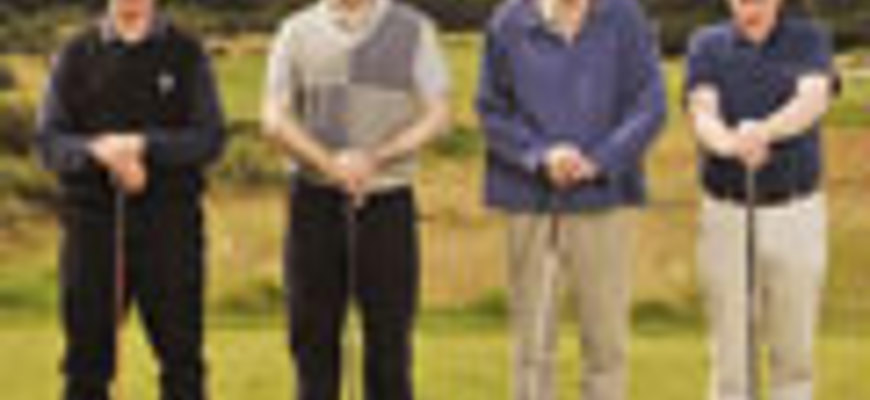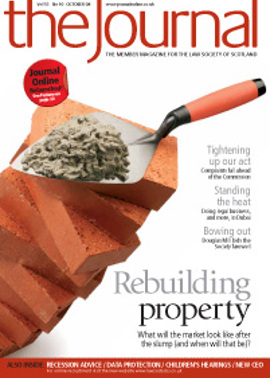When is a discharge not a discharge?

From time to time difficulties appear to arise in relation to discharges, particularly where there is a subdivision of land. For example, the title to land owned by your client is recorded in the Sasine Register. There is a security recorded over that land. Your client sells off part of the land, which area forms the basis for an application by the purchaser’s agents for first registration in the Land Register. Your client requires to deliver either a discharge or a deed of restriction.
Your client earns enough from the sale proceeds of the split-off area to redeem the whole security over the subjects that he owns. They duly deliver a discharge to the purchaser’s agents for association with the application for first registration, which is duly completed.
A year or two later your client comes to sell off a second area of land from their sasine title. You discover that the security over it is still recorded, as the discharge has been registered only in the Land Register against the split-off area previously registered. You must provide, presumably, either a clear search over the Sasine Register, or a discharge. No one can trace the principal deed of discharge you delivered to the previous purchaser’s agents. What do you do?
There is a relatively straightforward solution to the problem. First, though, it might be useful to emphasise that, in order for a discharge to be recorded in the Sasine Register, an application will require to be made on a sasine application form and submitted with the usual £30 fee. This is irrespective of any related Land Register application that might be submitted; a separate application is required. A discharge presented for registration in the Land Register will not therefore be recorded automatically against any related or “parent” title in the Sasine Register.
So how do you resolve the impasse that has arisen with your client’s second subdivision? The most straightforward solution to the problem is to approach the Keeper and request a copy of the discharge that was registered in the Land Register in respect of the first subdivision. Though not forming part of the Register, the Keeper, as a matter of practice, retains a copy of deeds that he receives with applications for registration. A copy of the discharge that was registered should therefore be available (there is a small fee for providing such copies), and can then be submitted with a sasine application form, the usual £30 fee, and a covering letter explaining the circumstances. The discharge can then be recorded, allowing a clear search in the Sasine Register to be exhibited.
Of course, the situation can be avoided by recording the discharge in the Sasine Register at the time of the first subdivision, thus avoiding the need for registration in the Land Register at all.
I hope this illustration is helpful.
Bruce Beveridge, Deputy Keeperr
ARTL UPDATE – as at 6 October
10,000th ARTL transaction
We are delighted to report that just as the Journal is going to press, the number of ARTL transactions processed has passed the 10,000 mark.
For up-to-date information and a full list of participating firms and companies go to: ros.gov.uk/artll
RoS stage charity golf day
Register House Golf Club (RHGC) held its first ever charity golf event in St Andrews on 3 September 2008, raising over £14k for the charity Children with Cancer and Leukaemia Advice and Support for Parents (CCLASP), nominated by Registers of Scotland staff. The event was made possible by generous sponsorship from a number of organisations.
Valerie Simpson, managing director and founder of CCLASP, said: “Well done to everyone involved. It was a great day and extremely well organised. The money raised will help us to provide vital support to families affected by cancer.”
Derek Hand, Captain, RHGC said: “The golf club was delighted to be involved with such a fantastic event. Everyone I spoke to during and after the event said how much they enjoyed the day. We are delighted so much money was raised for CCLASP and this money will help fund some of the excellent work they undertake.”
The team from Union Connect were crowned champions, Arup Scotland finished a close second and RHGC came third.
Twenty-two teams of four from a wide range of organisations took part, including the Law Society of Scotland; Almond Catering; Millar & Bryce; One Search; Ordnance Survey; Pertemps; the Daily Record; and Scottish Television.
An appreciated gesture on the day was the announcement from Millar & Bryce that they also wished to provide a generous donation to CCLASP. This was very much appreciated.
Congratulations to all the winners but a special thank you to all the teams and sponsors who supported the event.
In this issue
- IHT: spouses and the nil rate band
- Taking up the message
- SGM: support for review process
- Rebuilding to order?
- Nipped in the bud?
- Hearing better
- Dubai: an ever-expanding market
- When is a discharge not a discharge?
- Out of the hot seat
- Site to behold
- Now for the real thing
- Navigating the perfect storm
- Data, personal data and statistics
- Caring about sharing
- Rainmaker - or cloud on the horizon?
- The limits of belief
- Process queries
- Scottish Solicitors' Discipline Tribunal (1)
- Scottish Solicitors' Discipline Tribunal (2)
- From agreement to obligation
- Ganging up on exploitation
- Scottish Solicitors' Discipline Tribunal
- Website review
- Book reviews
- Up for the big event
- Old lessons hold good
- The revolution starts here?
- CML Handbook: why the fuss?






